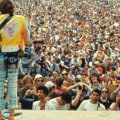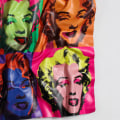Popular culture is essentially a set of beliefs, values, actions, objects or goods and practices that are popular at any time and space in society. It can refer to things such as art, literature, fashion, dance, film, television, magazines and ways of life, to name a few. Examples of pop culture can be found in language, art, cinema and, in particular, music. This can include 40 pop music, young adult fiction such as Harry Potter, and fleeting pop culture trends, such as flash mobs and clothing styles.
A central feature of boy bands is that they are given a fun pop image designed to attract a wide audience. Cosplay is a form of dressing up (it's an acronym for “dress up game”) in which people dress up as various characters from popular culture. Some examples of popular Saturday morning cartoons throughout history are Scooby-Doo, Buggs Bunny, Road Runner, X-Men and Pokémon. Driven by greater technological growth, popular culture was greatly affected by emerging forms of media throughout the 20th century.
South America also has its own very popular television programs called telenovelas, which are popular for their dramatic and exaggerated plots. The German researcher Ronald Daus, who studies the impact of non-European cultures in North America, Asia and especially in Latin America, has made important contemporary contributions to understanding what popular culture means. The challenges that became big enough even involved the participation of prime ministers and politicians hoping to harness the popular spirit of the time. As mentioned above, a primary source is the media, especially popular music, movies, television, radio, video games, books and the Internet.
Popular culture also encompasses the activities and feelings produced as a result of interaction with these dominant objects. While the folkloric element of popular culture is strongly related to the commercial element, public communities have their own tastes and may not always accept all cultural or subcultural items sold. Many young adult fiction books make their way into the popular imagination and become an important part of popular culture. In addition to forging a sense of identity that links people to society in general, consuming pop culture items often improves a person's prestige in their peer group.
Most people were scattered around small towns and rural areas, conditions that were not conducive to a “popular” culture. Pop music, on the other hand, has been used primarily to describe music that evolved from the rock and roll revolution of the mid-1950s and that continues on a definite path to the present day. He argued that the products of the cultural industry are popular because they are homogeneous and comply with standard conventions; therefore, the media influence children's tastes.


